HOW TO CHOOSE A KAYAK PADDLE?
Choosing the right paddle from the sea of paddles on the market can be a daunting task. With a variety of sizes, styles and materials (not to mention price tags) it can be hard to know what is going to work for you.
Never fear – We’re going to try to take the heavy lifting out of the decision and guide you through some of the things to consider when looking for a paddle. Strap in for a spiel.
CHOOSING YOUR PADDLE SIZE
Basically when choosing your paddle size you are looking to find a paddle length that allows you to submerge the majority of the blade into the water while still maintaining a comfortable and proper paddle technique and without hitting the edges of your kayak.
There are a few factors to consider here and contrary to popular belief your height is not always the main one. While your stature does play a part, your kayak and the type of paddling you do is probably the bigger question.
When talking about recreational kayaking (we will talk about racing & white water soon), the width of your kayak is the primary factor in determining your paddle size. Simply put, the wider the kayak is, the longer the paddle will need to be to hit the water comfortably at the right angle.
KAYAK WIDTH
Below is a guide only, be mindful that your body stature and paddling activity will effect how long you want your paddle.
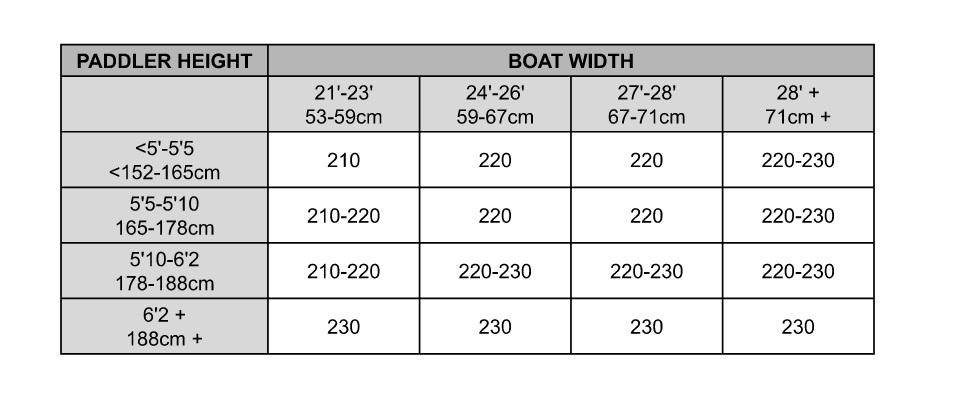
STATURE
While height works as simple guide, it is actually your torso length that is at play here. For example, two people of the same height with different body shapes may need different sized paddles. Someone with a long torso will need a longer paddle than someone who’s height is in their legs.
The quickest and easiest way to check your stature against your paddle is to hold the paddle above your head, with your elbows at a right angle. Your hands should land roughly 2/3rds of the way between the centre of the shaft and where the shaft meets the blade.
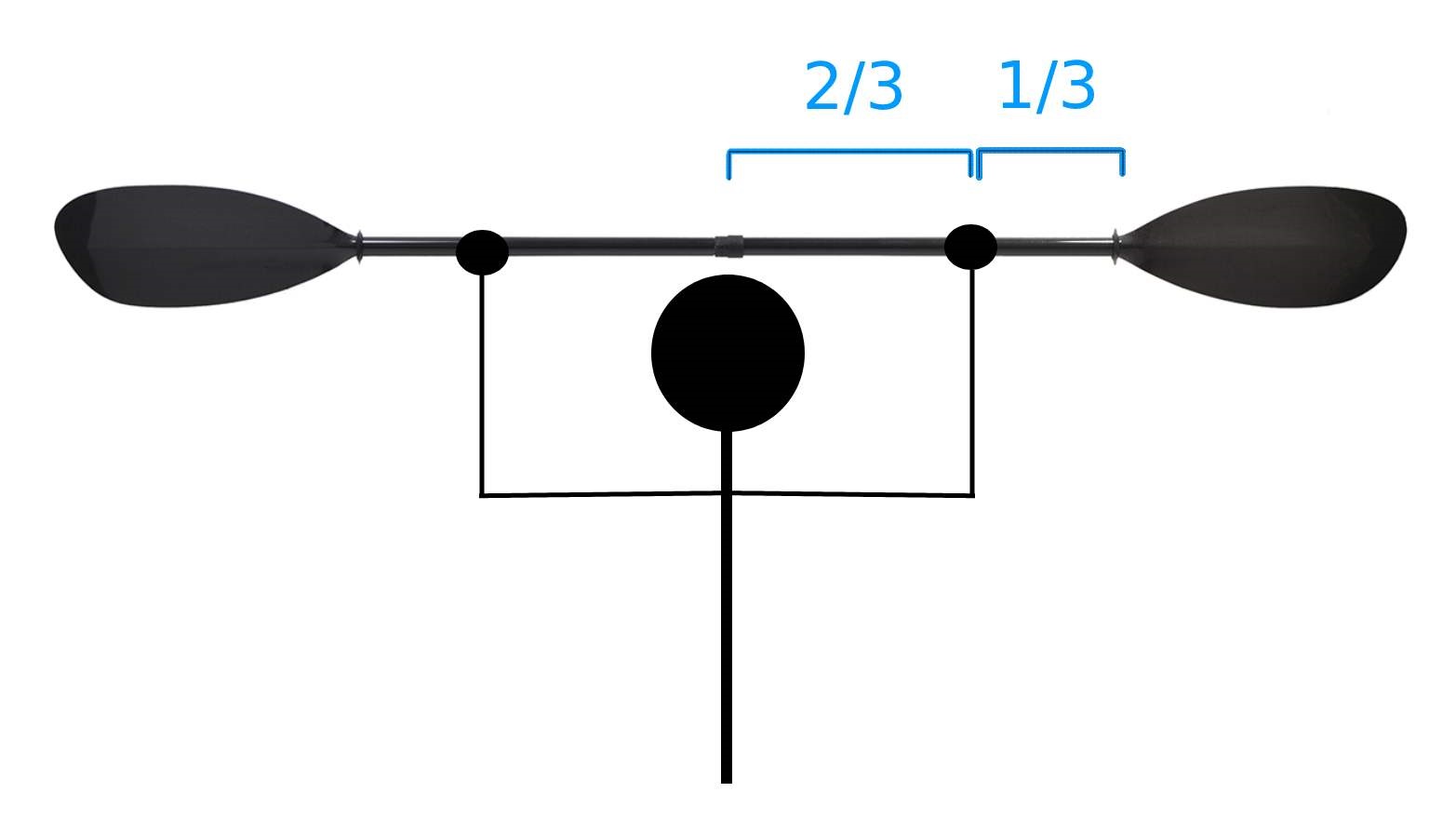
Alternatively you can measure your torso height by sitting on a chair and measuring the distance from the chair to the tip of your nose. According to some of the experts Torso Height is more important than actual height.

STROKE STYLE/TYPE OF KAYAKING
A shorter paddle allows you to take shorter, faster strokes so people sprint racing or tackling white water usually opt for a shorter paddle (185cm – 210cm). This shorter paddle length suits people who’s paddling style is angled high and when the aim of the game is to be fast, strong and agile. How short you go will depend on your torso length/arm span, kayak and personal preference.
A longer paddle (~210-230cm) is better suited to sea kayaking, touring & most recreational paddling. The length allows for a natural rhythm, or cadence, in your paddling style that works better over long distances or for recreational paddling. The blade can easily be submerged while maintaining a natural paddling technique – this gives you the most bang for your buck in terms of paddle efficiency.
Most fishing kayaks are wide and set up with a higher seat, which means your paddle length will need to be longer still (~230cm +) .
CHOOSING YOUR PADDLE STYLE
ONE OR TWO PIECE?
The advantages of a two-piece paddle are:
- Easy storage and transport
- Adjustable length options
- Adjustable feather options
*The type of joiner is something to consider when looking at two-piece paddles. Some allow for adjusting length and feather while others may limit the options or not adjust at all.

The advantages of a one-piece paddle are:
- Stronger
- Lighter
- Less parts to break/fault
FEATHER
The feather refers to the angle of the paddle blades in relation to each other eg. A 90 degree feather would mean the blades are at a right angle to each other. No feather would mean the blades are flat to each other. Generally the feather of a one piece paddle would be set between 33 and 45 degrees.
The feather you use is highly dependent on your personal preference, your paddling style and the conditions you’re paddling in. This is why it is advantageous to be able to adjust the feather as and when you see fit. The feather allows for one blade to be slicing the air while the other is pulling the water – all while maintaining a comfortable grip on the paddle shaft.
BLADE STYLE
You’ll notice that there can be a huge variety in the shapes and sizes of the blades. As a general rule, short and fat blades are designed for fast and strong paddling and longer thinner blades are designed for stamina.
High Angled blades are short and fat and designed to be held in a more vertical position that allows for very fast, strong paddle strokes. This is perfect for racing, sprinting, surfing or whitewater.
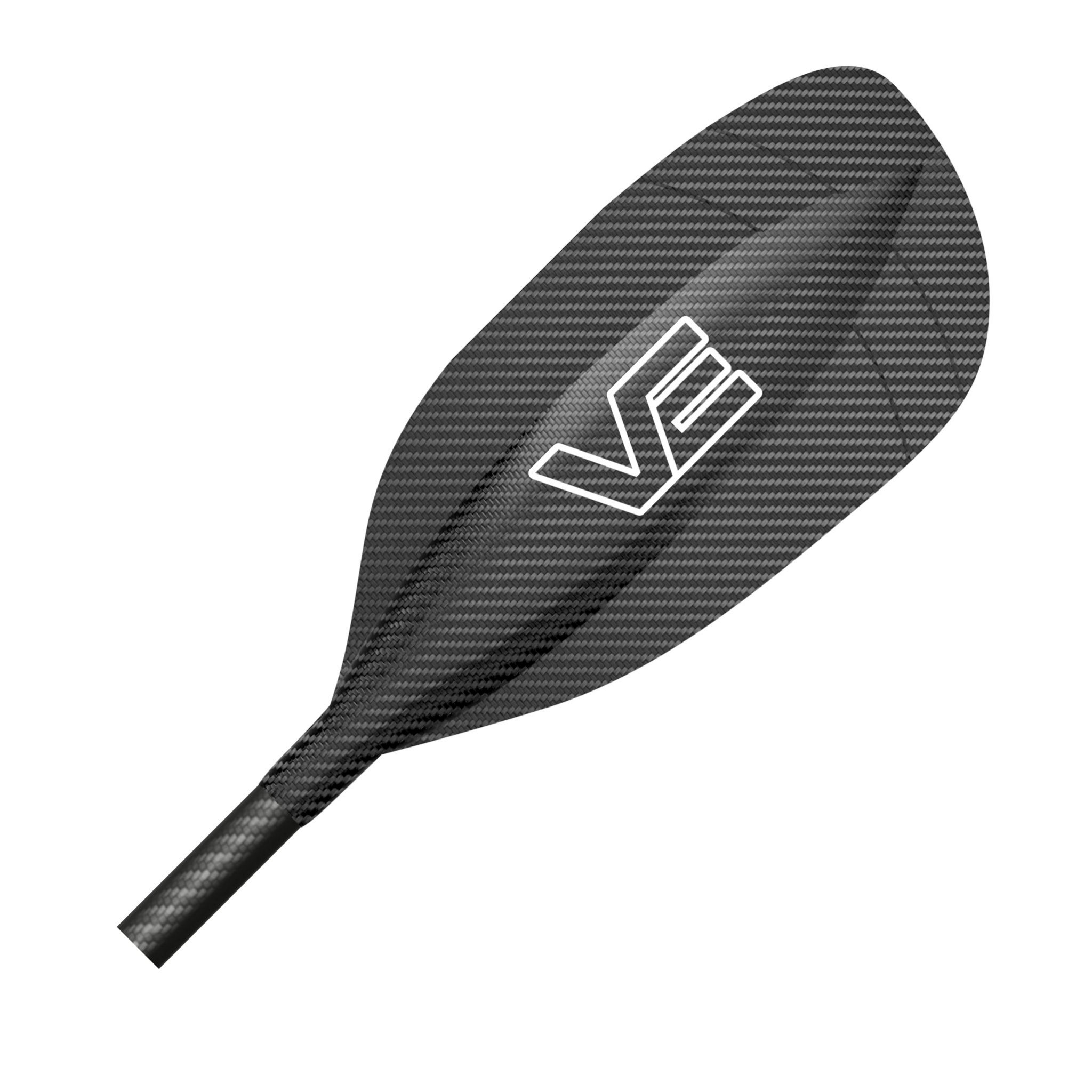
Low Angled blades are longer and thinner and designed to be held in a more horizontal position that allows an easy paddling rhythm. This technique is less tiring, more stable and offers less wind resistance. Therefore this style blade is perfect for sea kayaking, touring and long distance paddlers.
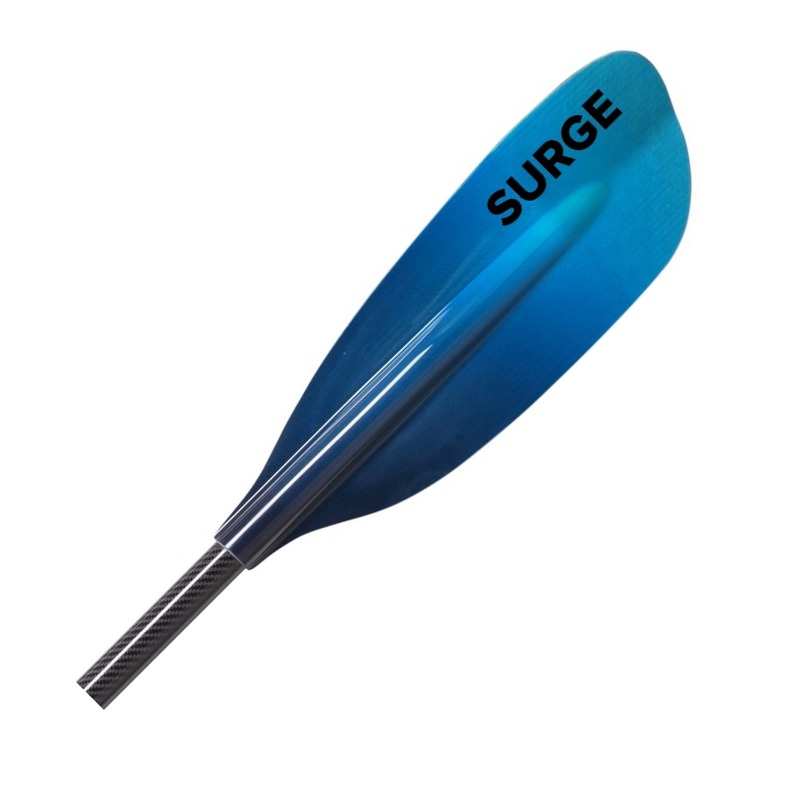
You will find that many of the recreational blades sit somewhere in between. This will suit the average paddler and paddlers that are looking for a versatile paddle.
Then there are a few curve balls…
Wing paddles are designed to be used with a very specific stroke technique. They are suited to a high angled stroke that pulls away from the boat creating a ‘lift’ like the wing of an airplane. The problem with wing paddles is that they don’t perform well with other strokes (back strokes, rudder strokes, draw strokes etc.) so they are really only suited to going fast in a straight line on flat water. They can be very efficient and effective and are perfect for people racing, paddling surf ski‘s or touring kayaks for fitness.

Greenland paddles are very long and very thin and tend to attract a lot of attention because of their unusual shape. They are designed to have a very low resistance in the water and are great for paddlers struggling with shoulder, wrist or elbow injuries. They require a specific paddling technique but when used correctly can offer a powerful stroke with low impact on the body. These paddles are an acquired taste but have a very loyal following.
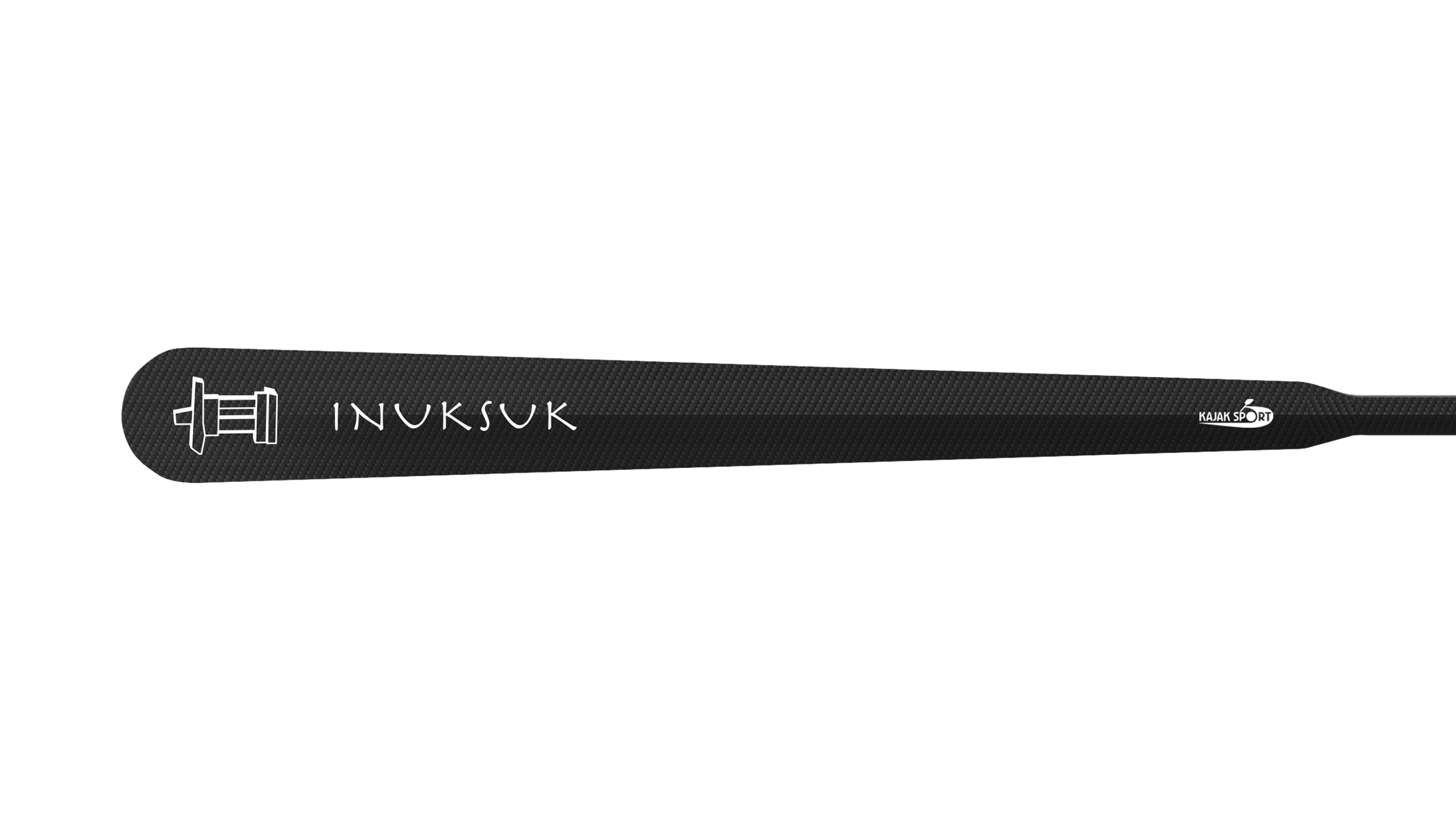
SHAFT STYLE
Most paddles come standard with a straight shaft however some are made with a “bent” or “crank” shaft. These paddles have a kink where you grip the paddle and tend to be favoured by paddlers looking for a more ergonomic wrist position. These paddles work well for long distance paddlers, white water paddlers and paddlers prone to wrist or elbow pain. That said, at the end of the day, it usually comes down to a personal preference so, if possible, it’s best to see how it feels in the flesh.
HOW TO CHOOSE THE MATERIAL
ALUMINIUM
For entry level paddles, aluminium is often used as a shaft material paired with a plastic blade. This material is cheap and cheerful. At the end of the day it will do a job but it is not as strong, light or efficient as other materials.
Aluminium is well suited to beginners, occasional recreational paddlers or as a spare paddle. Once you know what you like you can upgrade to something lighter and stronger.
You can see an example of an aluminium paddle here.
PLASTIC
Plastic is a very common blade material and is popular because of its price and durability.
The draw backs of plastic blades is that they are heavy, chunky and flex under pressure which means the efficiency of your stroke is compromised.
Some blades will be made from a reinforced plastic which lowers the amount of flex, increasing efficiency whilst maintaining the tough, robust nature of the plastic.
You can see an example of a plastic blade here.
FIBREGLASS
Fibreglass is often used for blades, shafts and to reinforce plastic. Fibreglass is popular as it is lightweight, strong and does have a little flex under pressure. While this means the paddle is strong and efficient in the water it also means it has a brittle quality that requires more care (as in don’t go pushing off rocks or the shore).
In terms of pricing fibreglass falls in the middle between plastic/aluminium and carbon fibre. A good option for something that’s a step above your average paddle.
You can see an example of a fibreglass blade here.
CARBON FIBRE
Carbon Fibre is the top of the wazza in terms of paddle material. It is lightweight, strong, stiff and super efficient in the water. The only draw back? It’s expensive. Make sure you are ready to commit – these are paddles you want to treat nice and take home to the parents.
You can see an example of a carbon fibre paddle here.
STILL CAN’T DECIDE?
If you a looking for more specific and in-depth information about all things paddles you can check out a number of different articles on paddles here. A great resource to dive down the rabbit hole.

Andi. That is a great article / lesson on paddles. I was out on water today and telling my companion that I felt the paddle was not as good as it could be for me. Well now I know I am right also what to look for when buying one. Thanks